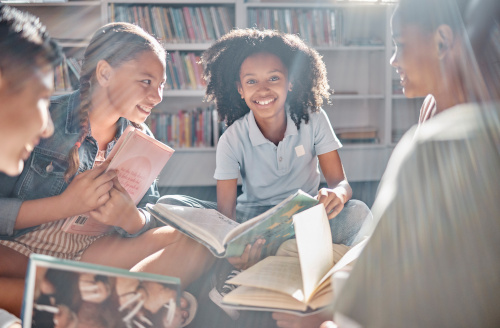By collaboratively setting goals aligned to their dreams, you will contextualize the importance of the high expectations while reinforcing your investment in them — not only as a student but as a human.
Integrating high expectations day to day
With a keen understanding of a student’s long-term aspirations, you are well-positioned to consistently remind them of the in-class success targets necessary to achieve their goals. This might look like reviewing their current NWEA results and discussing any areas they need to develop to be proficient, or sharing a student exemplar of what the final product on a project can, and should, look like.
On other occasions, high expectations might be behavioral. It might mean reminding a student that paying attention in class is integral to understanding the material and that mastering this material will help them realize their long-term goals. The more you can connect these discussions that transpire during the school day to their personal aspirations, the more expectations can reinforce a strong student-teacher relationship.
Establishing a culture of compassion
With the massive toll on student mental health as a result of the stress that came with COVID-19, it’s not a surprise that teachers reported their most-used engagement practice in 2022 was demonstrating their caring, relationships, and support for students. Over 96 percent of teachers reported using this engagement strategy daily. In a post-pandemic world, we need positive classroom environments. Students need to feel supported, nurtured, and cared for to feel engaged and successfully learn .
While setting high expectations and building caring relationships with students are interconnected, it doesn’t always feel that way for students in the moment. Educators need to invite students into the goal-setting process and ground their high expectations in this context.
Looking ahead
The implementation of these two strategies is complementary. Building relationships with students on a foundation of trust is natural and appropriate before you can ask more of them. In learning more about what matters to them, you can better contextualize the purpose of your high expectations.
As we move into 2023, we’re excited to continue connecting with educators to understand if their predictions of reinforcing high expectations as the primary engagement strategy serve them well and how it propels student achievement. Establishing strong relationships with your students is the foundation that enables students to engage in learning, and, ultimately, drive outcomes.
Related:
Use these 5 strategies to boost student engagement
4 blended learning strategies for better student engagement
- Are substitutes the answer to the teacher shortage? - June 13, 2023
- Preparing for ransomware attacks begins with education - June 13, 2023
- How to use UDL-inspired technology to reengage students - June 12, 2023

